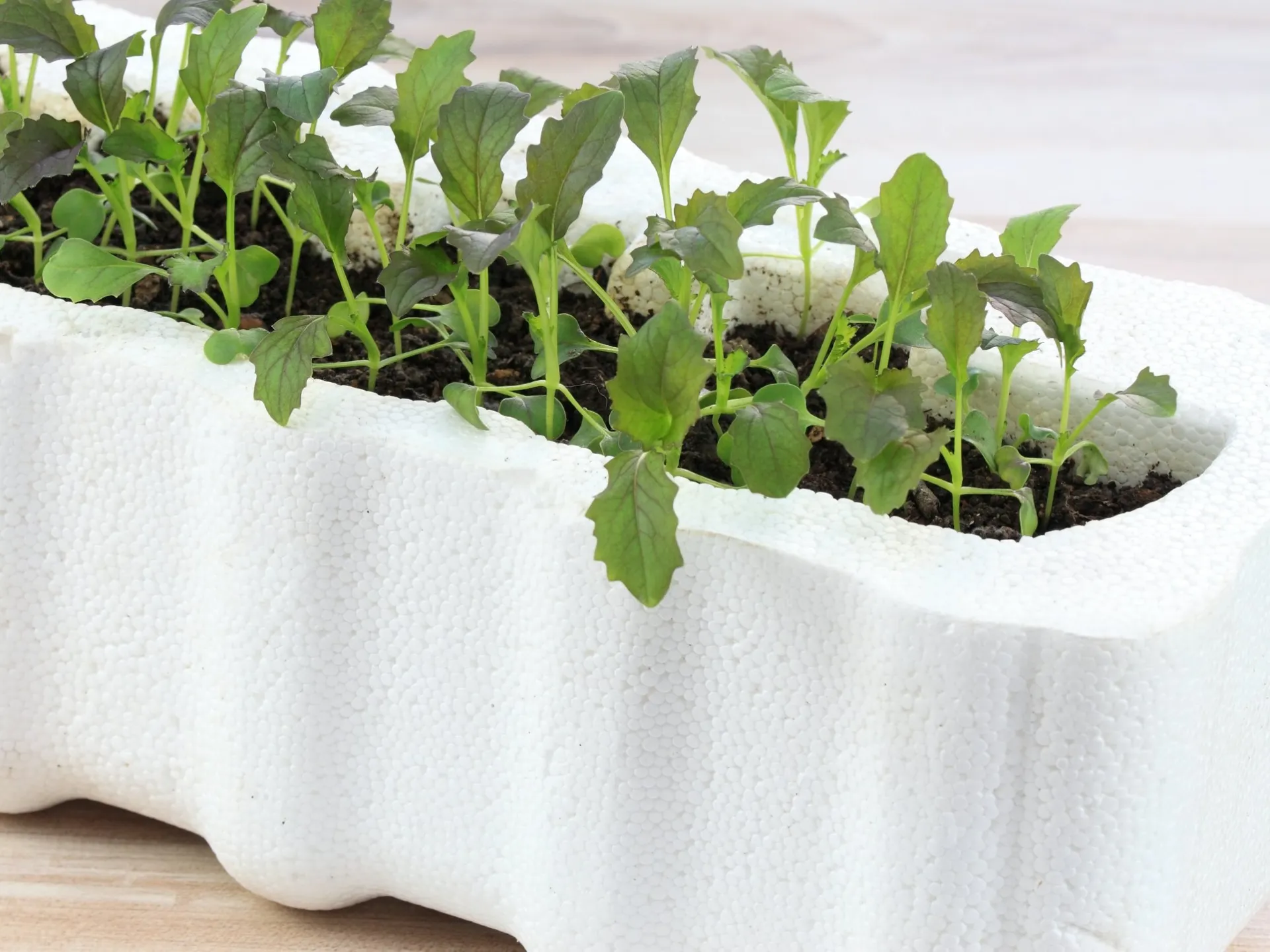Expanded Polystyrene (EPS) has emerged as one of the most adaptable materials in contemporary manufacturing and construction. When considering foam materials for packaging, insulation, or industrial uses, understanding EPS's attributes, advantages, and environmental implications will aid in making well-informed purchasing choices.
Što je ekspandirani polistiren (EPS)?
EPS is a rigid, closed-cell foam crafted from polystyrene beads via a unique expansion process. When manufacturers subject these tiny beads to heat and pressure, they expand to around 40 times their original size, resulting in a material composed of 98% air and only 2% polystyrene.
This expansion process imparts EPS its unique cellular structure, with millions of closed air-filled cells offering superior insulation and cushioning properties. As the second-largest styrene derivative globally, EPS reflects its extensive industrial usage.
Key Properties Important to Buyers
Exceptional Thermal Performance
EPS offers consistent R-values ranging from 3.6 to 4.2 per inch of thickness, making it one of the most efficient insulation materials available. Unlike certain alternatives, EPS preserves these thermal properties throughout its service life without significant degradation.
Superior Strength-to-Weight Ratio
Despite its lightweight composition (usually 0.7 to 3.0 pounds per cubic foot), EPS boasts impressive compressive strength. This feature cuts down on shipping costs while maintaining structural integrity in demanding applications.
Moisture Resistance
The closed-cell structure prevents water absorption, eliminating worries about mold, mildew, or rot. This attribute is particularly valuable in construction applications where moisture exposure is unavoidable.
Impact Protection
EPS absorbs and dissipates impact energy effectively, safeguarding delicate products during transportation and handling. The material regains its shape after minor impacts, ensuring protective performance throughout multiple shipping cycles.
Chemical Stability
EPS resists most aqueous solutions, alcohols, and weak acids, ensuring compatibility with a variety of applications. However, it dissolves in organic solvents, a factor buyers should consider when selecting packaging materials.
Primary Applications Across Industries
Packaging Solutions
Manufacturers depend on EPS for protective packaging, as it cushions products against shock, vibration, and temperature fluctuations. The material excels in shipping electronics, medical equipment, fresh produce, and temperature-sensitive pharmaceuticals. Custom-molded EPS packaging offers a precise fit and optimal protection while reducing package weight.
Građevinarstvo
Contractors incorporate EPS into building envelopes as insulation for walls, roofs, foundations, and floors. The material contributes to energy-efficient building designs that slash heating and cooling costs over the structure's lifetime. Geofoam applications use large EPS blocks as lightweight fill material for roadways, embankments, and foundation support on weak soils.
Industrial Applications
EPS is also used in flotation devices, automotive components, display fixtures, and specialized manufacturing molds. Its ease of fabrication allows for complex custom shapes that meet specific application needs.
Environmental Profile and Sustainability
Recycling Capabilities
EPS is 100% recyclable, and modern recycling technologies have made the process more efficient and cost-effective. Recycled EPS can be transformed into new packaging products, construction materials, or durable goods like picture frames and office supplies.
The material carries resin identification code 1, which aids recycling facilities in sorting and processing it correctly. However, contamination with food residue or other materials complicates recycling, so clean separation remains crucial.
Transportation Efficiency
EPS's high air content significantly reduces transportation weight compared to alternative materials, directly translating to lower fuel consumption and reduced carbon emissions during shipping.
Circular Economy Integration
Leading manufacturers now design EPS products with end-of-life recovery in mind. Take-back programs and densification technologies compress EPS waste to 1/50th of its original volume, making collection and recycling economically viable.
Izazovi i rješenja
The primary environmental concern involves improper disposal—EPS that ends up in landfills persists for extended periods due to its resistance to biodegradation. Additionally, lightweight EPS fragments can become litter if not properly contained.
Solutions include improved collection infrastructure, advanced recycling technologies, and the development of bio-based alternatives. Some manufacturers now produce EPS with additives that accelerate degradation under specific conditions, though these innovations require careful evaluation of performance trade-offs.
Selecting EPS for Your Application
Density Requirements:
Higher-density EPS offers greater compressive strength and durability, while lower-density options maximize insulation performance per dollar invested. Flame Retardancy:
Standard EPS is combustible, but manufacturers offer flame-retardant grades that meet building codes and safety standards for construction applications. Dimensional Stability:
EPS maintains its shape and properties across a wide temperature range (-30°C to +85°C), but verify that specifications match your application environment. Environmental Specifications:
If sustainability is a priority for your project, inquire with suppliers about recycled content, recyclability certification, and take-back programs. Making Informed Decisions
EPS continues to provide value across various applications due to its balance of performance, cost-effectiveness, and versatility. The material's established recycling infrastructure and improving environmental practices address sustainability concerns while maintaining the functional benefits that initially drove its adoption.
For packaging applications, EPS protects products while minimizing shipping weight. In construction, it offers reliable insulation that enhances building energy efficiency. The key is selecting the appropriate grade and density for your specific needs and ensuring proper end-of-life management through established recycling channels.
Understanding these characteristics helps you determine if EPS aligns with your technical specifications, budget constraints, and environmental commitments—empowering you to make procurement decisions that meet your organization's immediate and long-term goals.
Is EPS safe for food contact applications?
Često postavljana pitanja
Yes, EPS is FDA-approved for food contact and widely used in food packaging and service ware. The material is chemically inert and does not release harmful substances into food. It provides excellent insulation that keeps hot foods hot and cold foods cold, making it ideal for food transportation and storage.
How does EPS compare to XPS (extruded polystyrene) for insulation?
Both materials offer excellent insulation, but they differ in key ways. EPS typically costs 20-30% less than XPS while providing similar R-values per inch. XPS offers higher compressive strength and slightly better moisture resistance due to its denser, more uniform cell structure. For most building applications, EPS delivers comparable performance at a lower price point, making it the preferred choice for cost-conscious projects.
Can I recycle EPS packaging from the products I purchase?
Many communities now accept clean EPS for recycling, though availability varies by location. Check with your local recycling program or search for drop-off locations through the EPS Industry Alliance website. Many retail stores that sell products shipped in EPS also maintain collection programs. The key is ensuring the EPS is clean and free from contaminants like food residue or tape.
Does EPS degrade or lose its properties over time?
EPS demonstrates excellent long-term stability when protected from prolonged UV exposure and mechanical damage. Laboratory testing and field studies confirm that properly installed EPS insulation maintains its thermal performance for 50+ years. The material resists moisture, doesn't support mold growth, and won't settle or compress under normal conditions, ensuring consistent performance throughout its service life.
What’s the difference between EPS and Styrofoam™?
Styrofoam™ is a registered trademark of Dow Chemical for their extruded polystyrene (XPS) foam, typically blue or pink, used primarily in construction. EPS is a different material—expanded polystyrene foam that's usually white. While both derive from polystyrene, they use different manufacturing processes and have distinct properties. The terms aren't interchangeable, though "Styrofoam" has become colloquially (and incorrectly) used to describe all foam food containers and packaging, which are actually made from EPS.
Styrofoam™ is a registered trademark of Dow Chemical for their extruded polystyrene (XPS) foam, typically blue or pink, used primarily in construction. EPS is a different material—expanded polystyrene foam that’s usually white. While both derive from polystyrene, they use different manufacturing processes and have distinct properties. The terms aren’t interchangeable, though “Styrofoam” has become colloquially (and incorrectly) used to describe all foam food containers and packaging, which are actually made from EPS.



